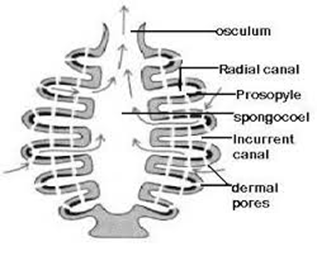Whittaker's Five Kingdom Classification | Biology Blog
Five Kingdom Classification
Early biologists classified all species as either plants or animals. Since this method makes it difficult to research specific creatures, American taxonomist R.H. Whittaker created the five-kingdom classification in 1969. This system divides all organisms into groups based on how they are organized and how they are fed. Important standards for this classification include -
- The complexity of cell structure i.e. Prokaryotic and Eukaryotic.
- The complexity of the Organisms body is Unicellular and Multicellular.
- Mode of nutrition Autotrophs and Heterotrophs.
- Lifestyle.
- Phylogenetic Relationship.
- Kingdom Monera
- Kingdom Protista
- Kingdom Fungi
- Kingdom Animalia
- Kingdom Plantae
Kingdom Monera -
- Kingdom monera includes Prokaryotic Organisms.
- Their nutritional methods are different like they are autotrophs, heterotrophs, or chemoheterotrophs.
- They do not have a nuclear envelope.
- They do not have cell organelles like mitochondria, lysosomes, Golgi body, endo plastic reticulum, etc.
- With the help of asexual reproduction, they continue their species' existence.
- Flagella is present for its locomotion.
Kingdom Protista-
- Protista includes eukaryotic organisms that neither can be divided into fungus, animals, or plants.
- Nuclear envelope present.
- Autotrophic in nutrition.
- Mostly they are unicellular organisms but some are multicellular like kelp which provides shelter, oxygen, and nutrient to the underwater ecosystem.
- Fungi include eukaryotic organisms.
- Presence of nuclear envelope.
- Heterotrophic in nutrition.
- The cell wall is made up of cellulose and chitin.
- They reproduce by both means asexual and sexual.
Kingdom Animalia -
- They are multicellular organisms that do not possess chlorophyll in their body.
- Nuclear envelope present.
- Heterotrophic in nutrition.
- They are eukaryotic organisms.
- They reproduce through sexual reproduction. Asexual reproduction is present in some lower forms of animals.
- Muscle cells are present in the body which do contract and relaxation in their body parts.
Kingdom Plantae -
- They include Eukaryotic organisms.
- They contain photosynthetic pigments in plastids.
- They are primarily non-motile and attached to the solid substrate for getting support.
- Nuclear envelope present.
- They are autotrophic in nutrition.
- The mode of reproduction is asexual and sexual.
- Prokaryotes differ from all other organisms in their cellular structure, physiology, biochemical, and reproduction processes. They have got a separate place as kingdom Monera in five kingdom classification.
- All the unicellular and multicellular organisms are kept separate.
- Similarly, autotrophs and heterotrophs are kept separate.
Disadvantages Of Five Kingdom Classification - There are so many advantages of classification although there are some shortcomings also -
- There is no place for the virus in any five kingdoms.
- Similar organisms whether they are unicellular or multicellular are kept apart like unicellular and multicellular algae.
- All organisms other than the monera show that they are polyphyletic in origin.





Comments
Post a Comment